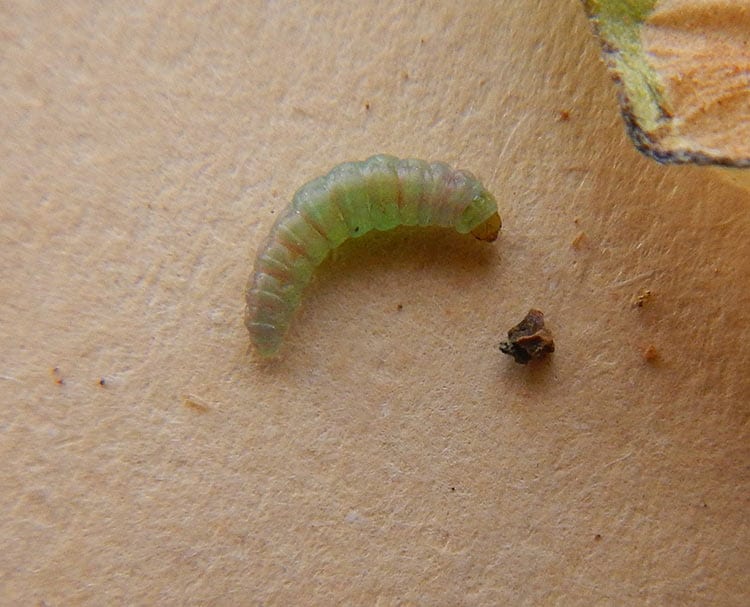Tuta absoluta eggs are just 0.5 mm long and can be found on the underside of young leaves or on the stems. A female can lay 260 eggs.
Young larvae are 1mm long and creamy yellow, after time they become greenish in colour and up to 7mm in length. The adult Tuta absoluta is a grey-brown moth, males are slightly darker than females. The moth is only 6mm.


